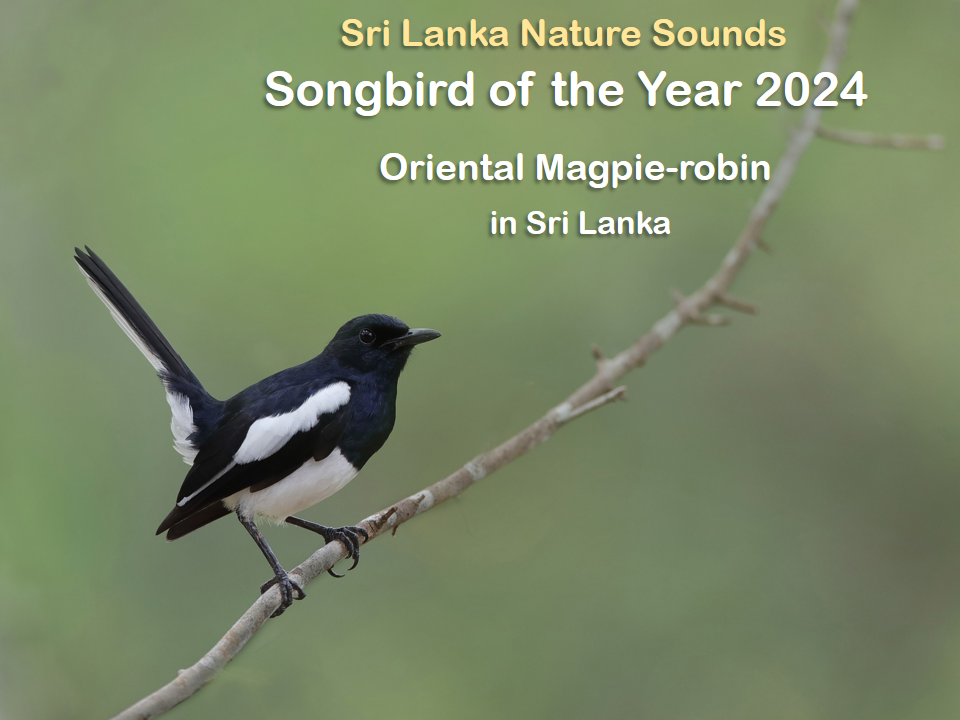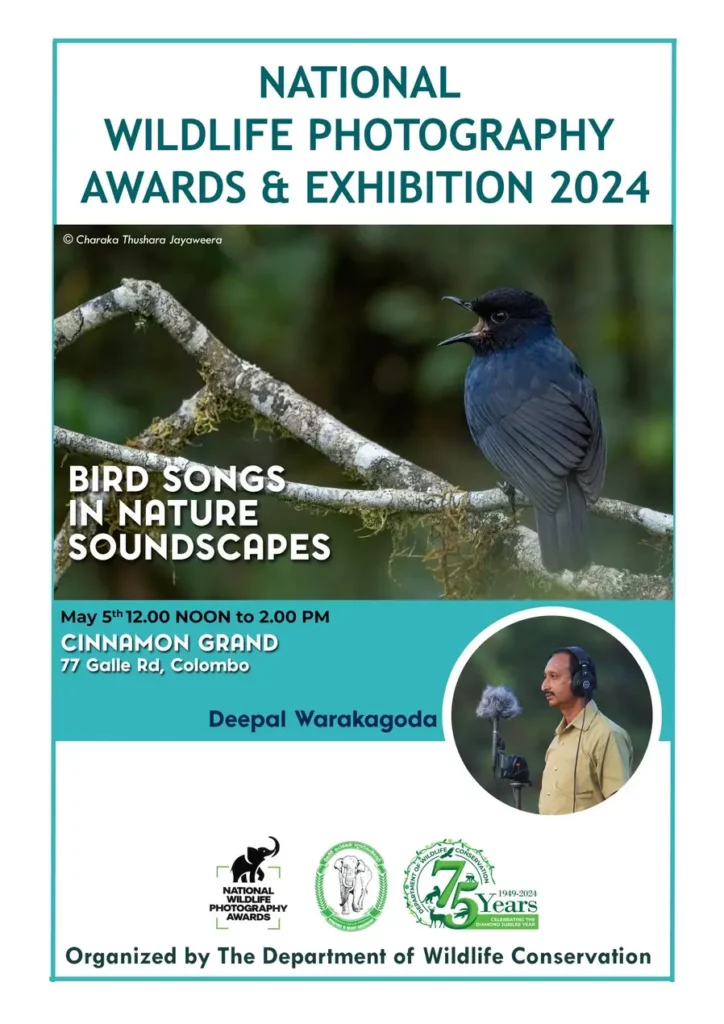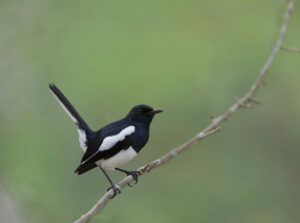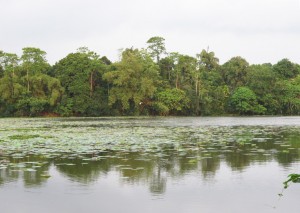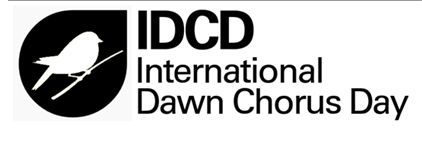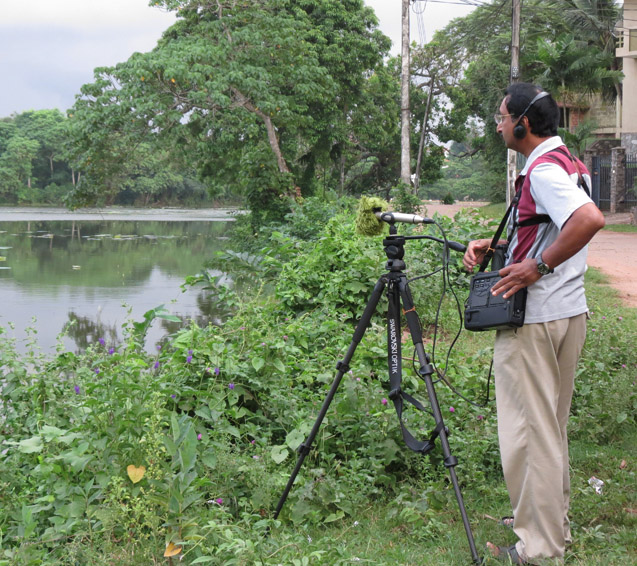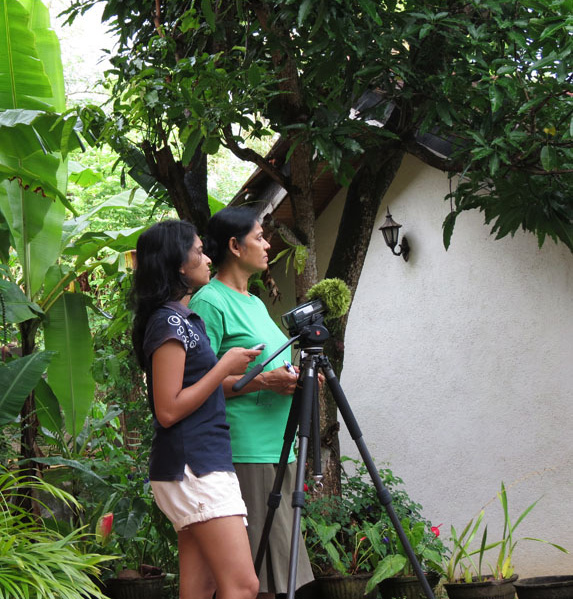Sri Lanka Nature Sounds Songbird of the Year 2024
Oriental Magpie-robin (Copsychus saularis) – the garden songbird in Sri Lanka
Sri Lanka Nature Sounds in conjunction with Drongo Nature Sounds Library has decided to present a songbird in Sri Lanka each year as ‘Songbird of the Year’.
For 2024 we present Oriental Magpie-robin (Copsychus saularis) as the Songbird of the Year.
(Photo by Namal Kamalgoda)
The background for this recognition is as follows. The founder of the two organizations above Deepal Warakagoda accompanied a bird photographer Frank Haugwitz on his photography tour of Sri Lanka in January. During their field explorations Frank suggested to Deepal naming a species as ‘Bird of the Year’ in Sri Lanka as done every year in his country Germany. One result hoped for is a special focus on it during that year by bird and nature observers.
Deepal then gave thought to the idea, and decided to name a ‘Songbird of the Year’ through his above two foundations, with his partiality to studying songbirds in Sri Lanka during the last few decades. The choice was also influenced by a discussion last year with his friend Rajith Dissanayake who was much impressed by the singing of magpie-robins in the Colombo area during a visit to Sri Lanka at the time.
In the early 1990s veteran birder Upali Ekanayaka, who was the leading expert on bird sound identification in Sri Lanka, drew Deepal’s attention to the Magpie-robin as the songbird most striking to him in the country, pointing out the extraordinary variability and musical quality in its songs. A few years later Prof. Valentine Basnayake, a well-known Western classical musician and educator in the country, commented to Deepal that the bird has clear notes that match those of Western musical scales. Deepal worked in a project to provide Prof. Basnayake with sounds of some of our bird species as educational material for Western music in the secondary school curriculum.
He recollects here with gratitude these three persons, and all the early writers who recognized the species to be one of the finest songbirds of Sri Lanka.
‘Songbird of the Year in Sri Lanka’ was first announced at the talk Deepal delivered on the topic ‘Bird Songs in Nature Soundscapes’ on 5th May 2024 (which was also International Dawn Chorus Day: please see the preceding blog post) at the exhibition National Wildlife Photography Awards, 2024, organized by the Department of Wildlife Conservation, Sri Lanka.
Audio albums: It is planned by Sri Lanka Nature Sounds to launch a few audio albums featuring some of the melodious songs of our Magpie-robin, from the recordings archived at the Drongo Nature Sounds Library, in due course. Below are a few samples of the recordings of the Magpie-robin’s songs heard in three different areas in the country.
at Gangodawila, off Nugegoda, a suburb of Colombo
at Seenuggala, Udawalawe National Park, in the Intermediate climatic zone of Sri Lanka
at Weddagala, off Kalawana, near the Sinharaja rainforest
Sri Lanka Nature Sounds & Drongo Nature Sounds Library 6th May 2024
